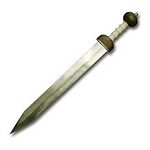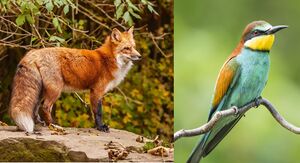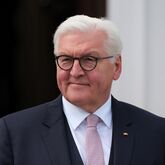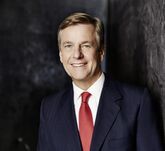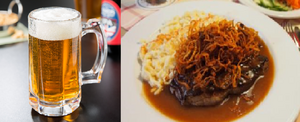New Sebronia
Federal Republic of New Sebronia
Sebric Federal Republic
| |||||||
|---|---|---|---|---|---|---|---|
| Motto: "Bargen, Vældaren e Gråslanden sœs verent, sot des Demiisma æbėjr tei regantei!" "Mountains, forests and grasslands are united for democracy to rule over them!" | |||||||
| Anthem: Hymn of Unity | |||||||
 Location of New Sebronia (Dark Green)
| |||||||
| Capital and largest city | Haæstre | ||||||
| Official languages | Sebric | ||||||
| Recognised national languages | Traditional Sebric | ||||||
| Recognised regional languages | Kistol | ||||||
| Demonym(s) | Sebric(s) | ||||||
| Government | Federal democratic parliamentary Republic | ||||||
• Federal President | Benjamin Tenidçi, LsM (since 2016) | ||||||
• Federal Chancellor | Laonie Terisėa, SGP (since 2020) | ||||||
| Legislature | Sebric Parliament | ||||||
| Federal Council | |||||||
| Federal Assembly | |||||||
| Establishment | |||||||
• TBA | TBA | ||||||
• Declaration of the Alaris Confederation | 1578 | ||||||
• Establishment of the Sebric Empire | 1733 | ||||||
• Declaration of the Federal Republic | May 14th 1912 | ||||||
| Area | |||||||
• Total | 711,937 km2 (274,880 sq mi) | ||||||
| Population | |||||||
• 2021 estimate | 112,701,000 | ||||||
• 2020 census | 112,048,592 | ||||||
• Density | 157.39/km2 (407.6/sq mi) | ||||||
| GDP (PPP) | 2020 estimate | ||||||
• Total | 5.22 Trillion ACU | ||||||
• Per capita | 46,545 ACU (1:1.178) | ||||||
| GDP (nominal) | 2020 estimate | ||||||
• Total | 4.43 Trillion ACU | ||||||
• Per capita | 39,512 ACU | ||||||
| Gini (2020) | medium | ||||||
| HDI (2020) | very high | ||||||
| Currency | Eri (ξ) (ERI) | ||||||
| Time zone | UTC-4 | ||||||
• Summer (DST) | UTC-4 (not observed) | ||||||
| Date format | dd-mm-yyyy | ||||||
| Driving side | right | ||||||
| Calling code | +420 | ||||||
| ISO 3166 code | NSB | ||||||
| Internet TLD | .nsb | ||||||
New Sebronia (Sebric: Navæ Sebroni), officially the Federal Republic of New Sebronia (Sebric: Federirepebljė Navæ Sebroni), is a federal democratic parliamentary republic on the southern coast of Clabury Lake in Thuadia, bordering Marzian to the north, Bakyern to the east, Kistolia to the west and Tiskaiya and Qazhshava to the south-west. It is devided into a total of 18 partly-souvereign constituent federal states, and with the capital city of Haæstre, as well as the two coastal cities of Deimeka and Den Edeldec as its major trade hubs, New Sebronia is considered one of the biggest economies in the northern Thuadian region, as well as one of the most environmentally friendly and stunning countries on Anteria.
Ethymology
The Common name is a derivative of the Sebric name Sebroni, the modernised version of the Traditional Sebric word Sabroniyen, which comes from the term "Sabrer onycer lendiyen" ("Sunny green place"). The term was used by batrecist monks to name the flat lands north-west of the Sudhoesh Mountain Range and became very common among the people who lived there, as evidenced by many ancient writings in which the term is mentioned. The first script mentioning the word Sabroniyen as a name has been dated back to the 3rd-4th century AD.
History
First Batrec tribes
TBA
Alaris Confederation/Confederacy of Alaris
TBA
Sebric Empire
In the year 1733, the Alaris Confederation fell. But not because of war, but a coup by the royalists wanting back their power, led by Crown Prince Kjevani of Laosanēs. He mobilized his own seperate army, which he built up without the Confederation knowing, and stormed the confederate government building, killing every politician and civilian they saw. The Confederation couldn't respond to the attack, as Kjevani bribed the commanders and leaders of the sebric army, gaining full military control over Sebronia. 5 hours after the coup, he announced the establishment of the Great Sebric Empire, a military monarchistic dictatorship, with Kjevani as the first emperor. Dark times came upon Sebronia, as the Empire suppressed the working class, religions and beliefs, homo- and bisexuals, women and foreigners or people with foreign roots. The nobility was the only class completely recognised as respected citizens and the simple people had to pay many taxes. Because of that, the gap between rich and poor became enourmous, with the richest 10% earning estimated 600x more than the poorest 10%. But the Sebric Empire didn't stay as it was, Kjevani hungered for even more power. In the year 1735, only 2 years after the establishment of the empire, the five remaining souvereign states not having been a part of the Alaris Confederation were invaded by the Sebric Empire. This invasion caused casualties of ~150 thousand citizens. The remaining populace of the invaded states were either enslaved or died of starvation.
Sebronia in the Great War
TBA
The Sebric Revolution
TBA
New Sebronia - Sebronia since 1912
TBA
The Dutchy-Sebric War
TBA
Geography
New Sebronia is located at the southern coast of Clabury Lake in Thuadia, bordering Marzian to the north, Bakyern to the east, Kistolia to the west and Tiskaiya and Qazhshava to the south-west. With 711,937 km^2, New Sebronia is smaller than 4 of its 5 neighbors, though it has the highest population out of the 6 nations, due to its relatively high population density. Its many big cities, in which a majority of the sebric people live, result in much untouched gras- and farmland, as well as many big forests, especially in the western and south-western parts of New Sebronia.
Climate
Due to New Sebronia being located at an latitude of ~17-26°, extreme temperature changes between summer and winter aren't very common. In addition to the rather temperate climate in that area it makes New Sebronia a very attractive tourist destination, especially at the northern coast in summer and the mountains in the east in winter. Especially in the south and west temperatures rarely fall to less than 3°C, while in the eastern mountain area, in can get much colder during winter due to high altitudes.
Biodiversity
Since New Sebronia values and protects its environment, its biodiversity is still very multifarious. About 32.2% of New Sebronias total land area is covered by forests, in which the national animal, the fox, lives. Also well-known animals are deers, brownbears, boars, mardens, lynxes, the Mubæki (also referred to as Bee-eater), and approximately 50,100 other animal species living in New Sebronia, of which 33,600 are insects. Many of those species live in national parks or nature reserves so they don't go extinct, same goes for some of the 10,200 plant species.
Politics
TBA
Government and Parties
Federal states and Administrative Districts
As a federal republic, New Sebronia consits of 18 states, TBA
Law
TBA
Government Spending
TBA
Foreign relations
New Sebronia has many political and military allies, and mostly has warm relations to democratic, environmentally friendly nations, as well as generally nations with the same political, economical, and ecological interests and goals. Dictatorships or very authoritarian as well as environmentally unfriendly nations are usually not liked
| Country/Union/Autonomous District | Status (Scale 1-5) |
Notes on relations | Mutual Embassies | Sebric Ambassador | Foreign Ambassador |
|---|---|---|---|---|---|
| 3 | Both members of some few organisations like SU, though the bak ideology is not much liked in New Sebronia | Yes (Deimeka, |
Rėij Karibarge | Heinrich Koller | |
| 4 | Yes (Deimeka, |
Jibaresi Alliba | Ilham Abdullah | ||
| 5 | Both members of several organisations like SU, PotR. TACO and IGP, having similar goals | Yes (Deimeka, |
Benjåmin A. Florianson | Yuli Kuznetsov | |
| 5 | Major trade partner and very many similarities in politics, policies, etc. | Yes (Haæstre, |
Eva Tomåri | Luci Kitoli | |
| 2 | Militaristic dictatorship, yet stable | Yes (Deimeka, |
Galji Almahri | Rezmân Manzâneh |
Military
TBA
Economy
TBA
Demographics
Population
TBA
Largest cities or towns in New Sebronia
Federal Census Bureau (2019) | |||||||||
|---|---|---|---|---|---|---|---|---|---|
| Rank | Federal State | Pop. | Rank | Federal State | Pop. | ||||
Haæstre  Deimeka |
1 | Haæstre | Haæstre State | 6,595,277 | 11 | Firtenjor | Valania | 433,987 |  Den Edeldec  Navæbariken |
| 2 | Deimeka | Sherkenlakes | 4,216,013 | 12 | Alaris City | Alaris | 403,364 | ||
| 3 | Den Edeldec | Vafitporte | 4,100,192 | 13 | Saikabarge | Merlin | 382,377 | ||
| 4 | Navæbariken | Bœrens | 1,703,124 | 14 | Breggenvål | Inbrek-Lyren | 350,231 | ||
| 5 | Pistora | Pistrente | 860,007 | 15 | Feriben abæler Kreiss | Sherkenlakes | 325,111 | ||
| 6 | Sibastre | Lower Lantery | 709,663 | 16 | Hedelstæt | Sarben-Osberland | 310,237 | ||
| 7 | Felstæt | Felstæt | 620,046 | 17 | Valhėm | Haæstre State | 277,292 | ||
| 8 | Håara | Pistrente | 605,234 | 18 | Dresdtaldenhėm | Alaris | 266,420 | ||
| 9 | Monnem | Sarben-Osberland | 561,125 | 19 | Itæstre | Valania | 261,822 | ||
| 10 | Alanbargen | Tretvel | 470,230 | 20 | Lėekstæt | Elbrect | 241,499 | ||
Language
TBA
Sebric
TBA
Traditional Sebric
TBA
Religion
TBA
Healthcare
TBA
Education
TBA
Culture
Cuisine
The sebric cuisine is broadly diversified, but is most known for meat and beer-like alcoholics, as well as fish on the coast. Sebrics are said to have a sensitive palate towards sour food, but that is mostly a myth. In New Sebronia, many dishes are cooked with rather spicy ingredients, the use of pepper and curry spices is relatively high. Fish is almost always eaten with sides like potatoes or fries, though it is only popular in the north, at the coast. Because of the big, flat lands in temperate climate, agriculture is a big industry in New Sebronia. Most sebric farmers and consumers produce and consume organic products like apples and other fruits, and that high supply is why organic products are alot cheaper to buy than in other countries.
The national dish of New Sebronia is the traditionally called "Sebri Rumpståk", a rumpsteak with molten herb butter in onion-beer-sauce, together with fried onions and thick spaetzles, which are called "Sepæselen". National drink is the "Vœderbijr", a kind of beer with a relatively high alcohol percentage of 13%. It is often drunk on important parties and festivals like the Days of Equilibrium, but also traditionally on the 18th. birthday of a boy, celebrating his adulthood.
Art & Music
TBA
Sports
TBA
Literature
TBA



